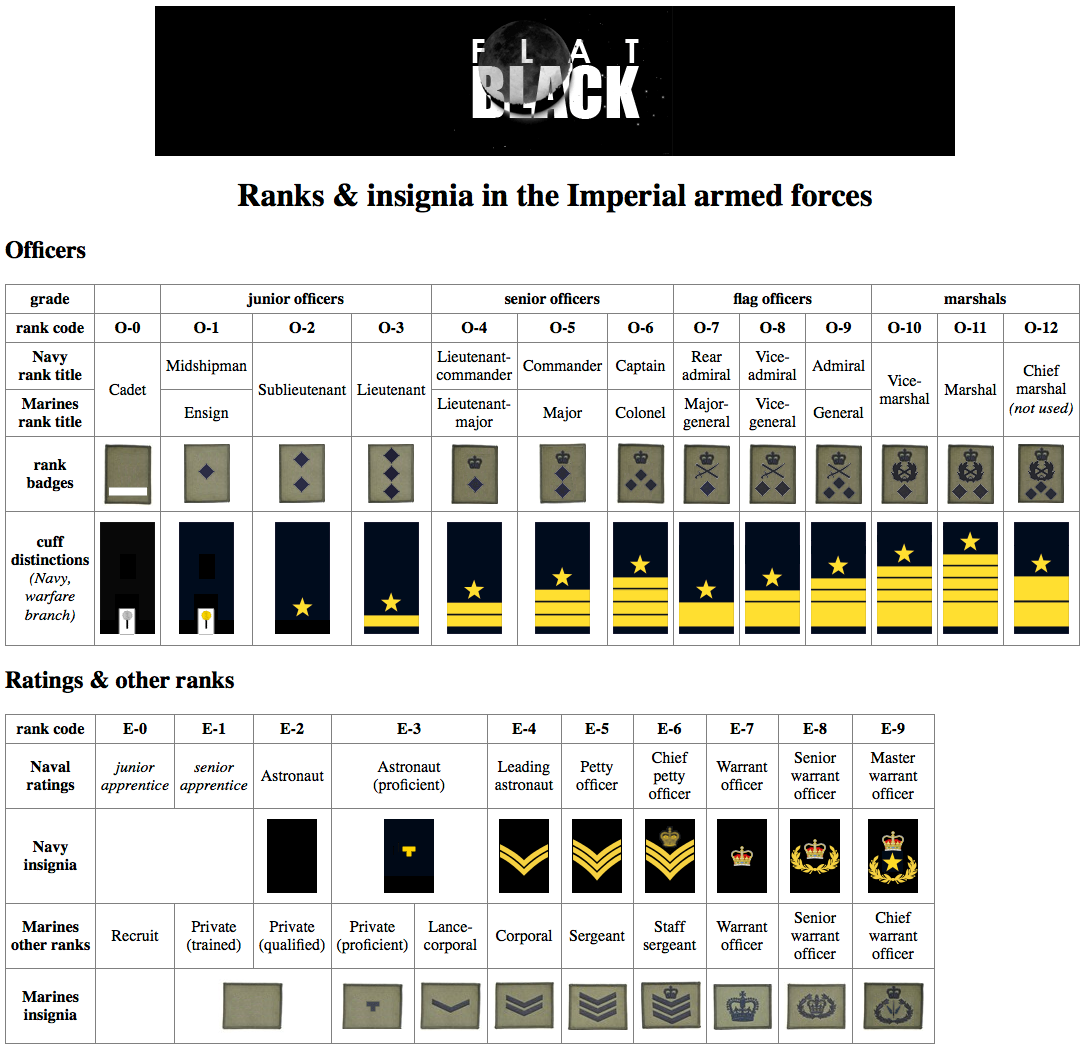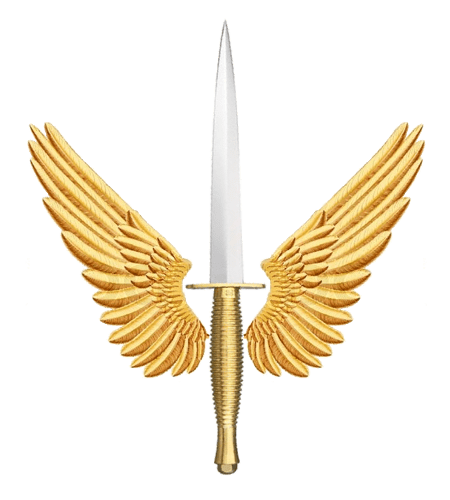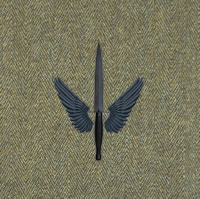The Imperial Service has two systems of insignia for rank. Officers in all branches of the Service¹ wear badges and stripes of braid on the cuffs of their jackets and overcoats, which are derived from officers’ insignia of the Mayflower Space Force, and ultimately from historical naval insignia. There is provision for wearing these insignia on slides on the shoulder-straps of short-sleeved uniforms, but civilians often omit them in informal circumstances. The Imperial Navy and Imperial Marines have an additional system based that was devised by a Senate committee in 499 ADT, and that was based on historical army insignia². They are worn in the middle of the chest and on the brow of a helmet in armour or fatigues, on the upper sleeve of service and other-ranks’ dress uniforms, on epaulettes on officers’ mess and dress uniforms.
In the system of cuff distinctions, officer candidates at the service academies and other Imperial training institutions (O-0) wear a white cloth label on the cuff of each sleeve, stitched in to the hem and secured on the outside by a silver button with a branch-of-service crest. Graduate interns and probationary officers (O-1) replace the silver button with a gold button. On receiving their permanent commissions (O-2) officers remove the labels³ and replace each one with a branch-of-service badge⁴. Then with each promotion up to O-6 (equivalent to a colonel or naval captain) one adds a narrow stripe of braid. At O-7 (major-general/rear admiral) one replaces the narrow stripes with a broad stripe, and then adds a narrow stripe with each grade up to O-11 (marshal). The chairman of the Imperial Council (emperor) wears two broad stripes when appearing in uniform in his or her capacity as commander-in-chief of the armed services.
The system of military badges of ranks provides no insignia for recruits, apprentices, or the junior grades of private and astronaut. At grade E-3 the rating or marine wears a small insignia shaped like a short-armed “T”, indicating training in advanced skills, but not command rank. In the marines the rank of lance-corporal is also E-3, and has command insignia consisting of a single chevron, point down. There is no equivalent rank in the Navy. Each of the next two ranks adds a chevron, and at rank E-6 (chief petty officer, staff sergeant) a small crown is added above the chevrons. The next ranks are technically warrant officers⁵ and not non-commissioned officers. The E-7 (warrant officer) insignia is a crown. E-8 (senior warrant officer) wears a crown inside a wreath. At E-9 the naval master warrant officer wears a crown above a star within a wreath, while the marines chief warrant officer wears a crown above a commando badge (winged dagger) in a wreath.
Officers ranks are divided into four groups of three. Within each group the lowest rank wears one star, the middle rank two, and the highest three. The lowest group (junior/company officers) has no categorical symbol. The second group (senior/field officers) is distinguished by a crown above its stars. The third group (admirals and generals) is distinguished by a crown over a crossed sword and baton over its stars, and the fourth group (marshals) by a crown over a crossed sword and baton imposed on an oak wreath. Note that the O-12 rank (chief marshal) is statutory but not in use. The emperor wears the insignia of a chief marshal when acting as commander-in-chief, but would outrank any substantive chief marshal if there were any.
¹ The Imperial Service does not technically include Eichberger Spaceways, Universal Imports, The Universal Bank, and the other commercial operations of the Empire.
² The specific symbols used were inspired partly by the insignia of the British Empire, but the system within which they are used is
- more regular, and
- based on an EU standard that emerged from German, Greek, Italian, Lithuanian, Netherlandish, Spanish, and Turkish norms.
³ It is customary to send one of the labels off the uniform worn during a commissioning ceremony etc. to each of one’s parents. The gold buttons are technically on loan, and it is customary to take them to the commandant of one’s academy in person if possible, or to send them as a personal package.
⁴ These are therefore called “commissioning badges”, “commissioning stars” in the warfare branch of the Imperial Navy.
⁵ These are British/Commonwealth style army style warrant officers, i.e. usually appointed as colour sergeants to companies, sergeants-major to battalions, regiments, and divisions; they act as as chief non-commissioned advisers to the commanding officers. They are therefore equivalent (I think) to US first sergeants, sergeants-major, boatswain’s mates and chief boatswain’s mates — not to US warrant officers. All Imperial marines and naval ratings are highly-trained technical experts.




